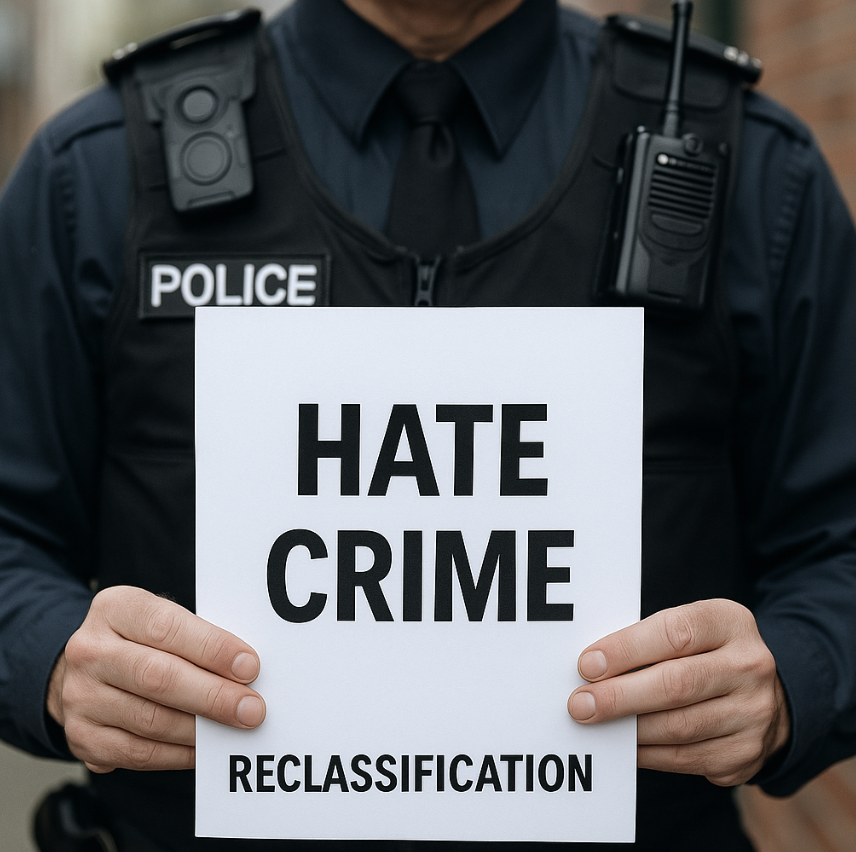
Florida’s “Hate Crime” Reclassification
Florida’s hate-crime statute, § 775.085, reclassifies an offense to a higher degree if “the commission of [the] offense evidences prejudice” based on the victim’s race, color, ethnicity, religion, national origin, sexual orientation, etc. Florida courts have interpreted this to apply only to “bias-motivated crimes” – i.e. crimes where the defendant intentionally selected the victim because of a protected characteristic.
In Stalder, the Florida Supreme Court held that “section 775.085… applies only to bias-motivated crimes”, defining such crimes as “any crime wherein the perpetrator intentionally selects the victim because of the victim’s race, color, ethnicity, religion, or national origin.” See State v. Stalder, 630 So. 2d 1072 (Fla. 1994). This construction was necessary to distinguish punishable bias-driven conduct from mere hateful expression during a crime. See generally Abbott v. State, 705 So. 2d 923 (Fla. 4th DCA 1997). The Court contrasted two scenarios:
-
- Bias-Motivated Crime: “A beats B because B is a member of a particular racial group.” In this situation, the “targeted activity—the selection of a victim—is an integral part of the underlying crime.” Such conduct is bias-motivated and can be punished with enhancement.
- Bias Incident (Non-motivated): “A beats B for some reason other than prejudice (e.g. jealousy, theft, self-defense, defense of others, defense of property), but in the course of the battery calls B a racially derogatory term.” In that situation, such as we have here, the apparent/potential “prejudice” is incidental – the hateful slur is “related to the underlying crime in only the most tangential way” (mere coincident expression) and not proof of bias motivation. Florida’s hate-crime statute, read Constitutionally, does not reach this scenario.
Succinctly put, Florida law requires proof the offense was caused by bias against the victim’s protected status – not merely that a slur was uttered or the alleged victim and defendant differed in race [1]. Jury instructions accordingly make prejudicial intent an element: Florida’s standard instruction on hate-crime reclassification (Instruction 3.3(f)) explains that the jury must find the defendant “intentionally selected the victim” due to racism/prejudice.
The statute is a penalty enhancement, not a separate offense. The hate “motivation” is an aggravating element that reclassifies the degree (and enhances possible punishment) of the crime. Because it effectively raises the offense level, the bias motive must be charged and proven beyond a reasonable doubt to the fact-finder. Florida courts insist the record “reflect” the bias motive finding, and require a specific jury finding to impose the enhanced sentence. See e.g., Apprendi v. New Jersey, 530 U.S. 466 (2000); Thompson v. State, 862 So. 2d 955 (Fla. 2d DCA 2004); Alusma v. State, 939 So. 2d 1081 (Fla. 4th DCA 2006).
Florida Case Law – Sufficient vs. Insufficient Evidence of Bias Motivation
Florida precedent illustrates what evidence can – or cannot – establish that a crime was committed “because of” bias. The “essence of criminality” under §775.085 is that “prejudice [was] a significant factor in bringing about the commission of the underlying crime”, essentially a but-for cause: “but for the racial enmity, the underlying crime would not have occurred.” See Stalder; State v. Hart, 677 So. 2d 385 (Fla. 4th DCA 1996). Bias need not be the sole motive, but it must be the substantial motivating factor behind selecting the victim.
Legally Sufficient Bias Evidence:
A prototypical sufficient case is one with explicit (or technically implicit – but legally equivalent – based on substantial circumstantial evidence of), targeted prejudice motivating, continuing throughout, and/or following the attack/criminal act.
In Stalder, for example, the defendant repeatedly denigrated the victim’s Jewish heritage (calling him “Jew boy,” “Jewish lawyer,” etc.) prior to, while committing, and subsequent to a battery (i.e., two months after initial incident while driving by victim’s house; and again, even later in the courthouse immediately prior to hearing) – although the Supreme Court did not explicitly state that such conduct/words were legally sufficient (the case was remanded for further proceedings based on its holding), we would suggest that under those circumstances (arguably an extreme “words-alone” circumstances), it may be enough to present the Hate-Crime allegation/reclassification to a jury.
Similarly, in Hart, the defendant was charged with threatening a public officer, enhanced under §775.085. Hart initially directed no abuse at the white officer who stopped him, but when a black officer took over, Hart unleashed a stream of racist words/threats (vowing to “get you, [nr],” burn crosses on the officer’s lawn; implying law enforcement hierarchy shared his opinions, etc.). Hart moved to dismiss the hate-crime element, arguing his outburst was merely anger at being arrested. The Fourth DCA reversed the trial court’s dismissal, finding that a jury could conclude Hart’s racial hostility, when compared to his behavior with other white officers and the sophisticated/detailed/cerebral nature of the words used, significantly motivated his threats – i.e. he escalated to violent threats specifically due to the officer’s race. Even if Hart was also angry about the arrest, the calculated, targeted, racist nature of his response supported a strong inference that racism/prejudice “was a significant factor in […] the underlying crime.” In other words, under the totality of circumstances, his conduct likely would not have taken the same violent/biased form absent true racial animus, making it a factual question for the jury.
Legally Insufficient Evidence (Bias Not Proven):
By contrast, if the evidence shows only that the defendant appeared to harbor bias or used slurs without linking that claimed-bias to the decision to commit the alleged crime, it is not enough. Florida courts have overturned hate-crime reclassifications when the jury was allowed to find prejudice based on incidental seemingly-hateful-language.
In Abbott[2], the defendant was convicted of aggravated assault for threatening a man with a weapon and shouting racial slurs during the altercation. The jury was instructed it could find the hate-crime enhancement if, in committing the assault, the defendant “evidenced prejudice based on race”. The Fourth DCA held this was error because it allowed conviction for the enhancement without any proof of bias motive. The prosecutor in Abbott had sought the enhancement merely because the defendant was “yelling racial slurs while pointing a knife”. The appellate court reversed the hate-crime sentence – even though the verdict ultimately still found “racial prejudice” – because the record did not establish that the crime itself was motivated by that claimed-racism/prejudice, as Stalder (et al.) requires. In essence, the appellate court’s rightful concern was that Abbott’s assault could have stemmed from a personal dispute or other non-bias reason, with the slurs merely being hateful embellishments or additional attempts to further shock/scare/intimidate. Such a scenario (the “second category” from Stalder) is insufficient for §775.085.
Likewise, the Third DCA in Richards[3] reversed an enhancement where the trial court refused to instruct the jury on the need for “prejudicial intent”. The DCA held the State must be able to prove as an essential element beyond a reasonable doubt that the defendant “was [truly] motivated by racial or national origin prejudice against the victims in committing the [alleged] crime.” Absent substantial, competent evidence tying the crime/assault to racism/bias, a Hate-Crime enhancement fails as a matter of law (a preliminary legal determination to be made by the court; under such circumstances, it does not become a factual determination left for the jury).
Evidentiary Pitfalls
Evidentiary pitfalls arise when prosecutors or courts infer motive too simplistically from slurs or from the mere background of the parties. Florida law (like that of many states) guards against these pitfalls. As stressed by the Florida Supreme Court in Stalder, the Hate-Crime statute cannot be triggered by “mere temporal coincidence” of a slur and an alleged criminal act.
Similarly, a victim’s protected status alone doesn’t prove motive. A Florida House analysis [4] summarizing Stalder and other legal authority explained that proof of the defendant’s or victim’s race, etc. by itself is not enough – racism/bias/prejudice must be a substantial factor in the crime’s genesis.
Beyond Florida
Beyond Florida, courts nationwide interpret “because of [a protected characteristic]” in hate-crime laws to require a causative bias motive.[5]
New York’s hate-crime statute[6], for instance, provides that simply showing a defendant and victim belong to different groups (or even that a defendant despises the victim’s group) cannot, by itself, establish hate-crime intent. In short, there must be affirmative evidence that claimed racism/bias prompted the offender to target the alleged victim.
Courts also warn against using racial or ethnic slurs improperly. While such slurs may be potential evidence indicating racism/prejudice/bias, they must still be tied to the motivation for the offense. A single epithet, or even numerous racial slurs uttered in close temporal proximity and in the heat of an otherwise unrelated altercation may be an inconclusive indication of possible prejudice, yet still fall far short of proving the crime was caused by that apparent prejudice.
As the San Diego County District Attorney’s guidance[7] explains: if someone shouts a bigoted slur, it “is probably not a hate crime, rather it is a hate incident. These occurrences are frequently frightening and upsetting, but they are not criminal”. It becomes a hate crime only if that perceived bias was a substantial reason for the alleged criminal conduct. Thus, prosecutors must connect the dots between hateful words and a decision to commit an alleged offense.
Broward Criminal Defense Lawyers
Have you been charged with or accused of a hate crime? If so, there are various defenses that may be applicable in your case. It is important that you contact an experienced attorney in order to discuss defense strategies immediately. Defenses that may be applicable include, but are not limited to lack of intent, consent, self-defense, defense of another person, defense of property, or an accident.
If you are facing State or Federal criminal charges, it is imperative that you secure legal counsel. The consequences for such charges may be severe. Kenneth Padowitz and Joshua Padowitz aggressively defend all “hate crime” cases for clients throughout the State of Florida. Broward criminal lawyers, Kenneth and Joshua Padowitz, are known for their tactical, aggressive representation. Contact our Fort Lauderdale criminal attorneys at 954-761-3888 or via email to set up a time for an initial consultation.
Footnotes
[1] See State v. Stalder, 630 So. 2d 1072 (Fla. 1994) (“It may seem doubly vile to members of our legal community to denigrate another for being a “Jewish lawyer,” as Mr. Stalder allegedly did, but such an act standing alone is every citizen’s right”).
[2] See Abbott v. State, 705 So. 2d 923 (Fla. 4th DCA 1997) (“It invited the jury to convict the appellant because he was yelling racial slurs while pointing a knife at the victim. That is precisely the type of conduct which Stalder held did not constitute a constitutional application of the statute”).
[3] See Richards v. State, 643 So. 2d 89 (Fla. 3d DCA 1994).
[4] See (https://www.flsenate.gov/Session/Bill/1998/3139/Analyses/19983139HCP_hb03139Z.CP.pdf)
[5] In Federal law, hate-crime provisions similarly demand proof of biased intent. For instance, 18 U.S.C. § 249 (the Matthew Shepard and James Byrd Jr. Hate Crimes Prevention Act) criminalizes violence “because of” certain protected traits. See also 42 U.S.C. § 3631 (“because of his race, color […]”).
[6] See N.Y. Penal Law § 485.05.
[7] See (https://www.sdcda.org/helping/hate-crimes-faq.html).


